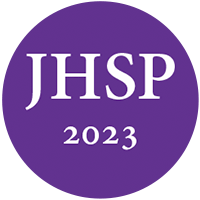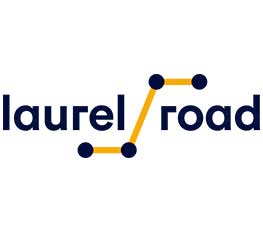The professional home for health service psychologists.
Join a community of 15,000 psychologists and trainees.
Learn it today. Apply it tomorrow.
Connecting you to what you need in your career.
Making a difference.
Pfund, R. A. & Ginley, M. K. (2019). Assessment and treatment of gambling behavior. Journal of Health Service Psychology, 45, 81–89.
Although gambling is a common recreational activity, it results in harm for as many as 6% of individuals in the United States. The harm may be in the form of financial, social, or psychological. A variety of assessments are used to diagnose gambling-related harm and facilitate treatment. Cognitive-behavioral therapy (CBT) incorporating motivational enhancement techniques and goal setting are used to treat gambling harms. The components of CBT generally include identifying triggers and high-risk situations, coping with internal and external triggers, increasing other pleasurable activities, cognitive restructuring, and relapse prevention.
Registrants can read the full article on CE.NationalRegister.org
American Gaming Association. (2018). State of the States 2018: The AGA survey of the commercial casino industry. Retrieved from https://www.americangaming.org/wp-content/uploads/2018/08/AGA-2018-State-of-the-States-Report_FINAL.pdf.
American Psychiatric Association. (2013). Diagnostic and statistical manual of mental disorders (5th ed.). Arlington, VA: Author.
Cowlishaw, S., Merkouris, S., Dowling, N., Anderson, C., Jackson, A., & Thomas, S. (2012). Psychological therapies for pathological and problem gambling. Cochrane Database of Systematic Reviews, 11, CD008937.
Dowling, N., & Smith, D. (2007). Treatment goal selection for female pathological gambling: A comparison of abstinence and controlled gambling. Journal of Gambling Studies, 23, 335-345.
Dowling, N., Smith, D., & Thomas, T. (2009). A preliminary investigation of abstinence and controlled gambling as self-selected goals of treatment for female pathological gambling. Journal of Gambling Studies, 25, 201-214.
Fauth-Bühler, M., Mann, K., & Potenza, M. N. (2017). Pathological gambling: A review of the neurobiological evidence relevant for its classification as an addictive disorder. Addiction Biology, 22, 885-897.
Gebauer, L., LaBrie, R., & Shaffer, H. J. (2010). Optimizing DSM-IV-TR classification accuracy: A brief biosocial screen for detecting current gambling disorders among gamblers in the general household population. Canadian Journal of Psychiatry, 55, 82-90.
Goodie, A. S., & Fortune, E. E. (2013). Measuring cognitive distortions in pathological gambling: Review and meta-analyses. Psychology of Addictive Behaviors, 27, 730–743.
Grant, J. E., Steinberg, M. A., Kim, S. W., Rounsaville, B. J., & Potenza, M. N. (2004). Preliminary validity and reliability testing of a structured clinical interview for pathological gambling. Psychiatry Research, 128, 79–88.
Ladouceur, R., Lachance, S., Fournier, P. (2009). Is control a viable goal in the treatment of pathological gambling. Behaviour Research and Therapy, 47, 189-197.
Lesieur, H. R., & Blume, S. B. (1987). The South Oaks Gambling Screen (SOGS): A new instrument for the identification of pathological gamblers. American Journal of Psychiatry, 144, 1184–1188.
Lorains, F. K., Cowlishaw, S., Thomas, S. A. (2011). Prevalence of comorbid disorders in problem and pathological gambling: Systematic review and meta-analysis of population surveys. Addiction, 106, 490–498.
Marchetti, D., Whelan, J. P., Verrocchio, M. C., Ginley, M. K., Fulcheri, M., Relyea, G. E., & Meyers, A. W. (2016). Psychometric evaluation of the Italian translation of the Gamblers’ Beliefs Questionnaire. International Gambling Studies, 16, 17-30.
Peter, S. C., Brett, E. I., Suda, M. T., Leavens, E. L. S., Miller, M. B., Leffingwell, T. R., Whelan, J. P., & Meyers, A. W. (in press). A meta-analysis of brief personalized feedback interventions for problematic gambling. Journal of Gambling Studies.
Peter, S. C., Whelan, J. P., Pfund, R. A., & Meyers, A. W. (2018). A text comprehension approach to questionnaire readability: An example using gambling disorder measures. Psychological Assessment, 30, 1567-1580.
Petry, N. M., Ammerman, Y., Bohl, J., Doersch, A., Gay, H., Kadden, R., Molina, C., & Steinberg, K. (2006). Cognitive-behavioral therapy for pathological gamblers. Journal of Consulting and Clinical Psychology, 74, 555-567.
Petry, N. M., Blanco, C., Auriacombe, M., Borges, G., Bucholz, K., Crowley, T. J., Grant, B. F., Hasin, D. S., & O’Brien, C. O. (2014). An overview of and rationale for changes proposed for pathological gambling in DSM-5. Journal of Gambling Studies, 30, 493-502.
Petry, N. M., Ginley, M. K., & Rash, C. J. (2017). A systematic review of treatments for problem gambling. Psychology of Addictive Behaviors, 31, 951-961.
Petry, N. M., Rash, C. J., & Alessi, S. M. (2016). A randomized controlled trial of brief interventions for problem gambling in substance abuse treatment patients. Journal of Consulting and Clinical Psychology, 84, 874-886.
Petry, N. M., Weinstock, J., Ledgerwood, D. M., & Morasco, B. (2008). A randomized trial of brief interventions for problem and pathological gamblers. Journal of Consulting and Clinical Psychology, 76, 318-328.
Sobell, L. C., & Sobell, M. B. (1992). Timeline follow-back: A technique for assessing self-reported alcohol consumption. In R. Z. Litten & J. P. Allen (Eds.), Measuring alcohol consumption: Psychosocial and biochemical methods (pp. 41-72). Totowa, NJ: Humana Press.
Steenbergh, T. A., Meyers, A. W., May, R. K., & Whelan, J. P. (2002). Development and validation of the Gamblers’ Beliefs Questionnaire. Psychology of Addictive Behaviors, 16, 143–149.
Stinchfield, R. (2002). Reliability, validity, and classification accuracy of the South Oaks Gambling Screen (SOGS). Addictive Behaviors, 27, 1-19.
Stucki, S., & Rihs-Middel, M. (2007). Prevalence of adult problem and pathological gambling between 2000 and 2005: An update. Journal of Gambling Studies, 23, 245-257.
Weinstock, J., Whelan, J. P., & Meyers, A. W. (2004). Behavioral assessment of gambling: An application of the timeline followback method. Psychological Assessment, 16, 72-80.
Welte, J. W., Barnes, G. M., Tidwell, M. O., Hoffman, J. H., & Wieczorek, W. F. (2015). Gambling and problem gambling in the United States: Changes between 1999 and 2013. Journal of Gambling Studies, 31, 695-715.
Whelan, J. P., Steenbergh, T. A., & Meyers, A. W. (2007). Problem and pathological gambling. Cambridge, MA: Hogrefe & Huber.
Winfree, W. R., Ginley, M. K., Whelan, J. P., & Meyers, A. W. (2015). Psychometric evaluation of the Gamblers’ Beliefs Questionnaire with treatment-seeking disordered gamblers. Addictive Behaviors, 43, 97-102.
Winfree, W. R., Meyers, A. W., & Whelan, J. P. (2013). Validation of a Spanish translation of the Gamblers’ Beliefs Questionnaire. Psychology of Addictive Behaviors, 27, 274–278.
Wulfert, E., Blanchard, E. B., Freidenberg, B. M., & Martell, R. S. (2006). Retaining pathological gamblers in cognitive behavior therapy through motivational enhancement. Behavior Modification, 30, 315−340.
Wulfert, E., Hartley, J., Lee, M., Wang, N., Franco, C., & Sodano, R. (2005). Gambling screens: Does shortening the time frame affect their psychometric properties? Journal of Gambling Studies, 21, 521-536.
Zendle, D., & Cairns, P. (2018). Video game loot boxes are linked to problem gambling: Results of a large-scale survey. PLoS One, 13, e0206767.
Copyright © 2025 All rights reserved. National Register of Health Service Psychologists










